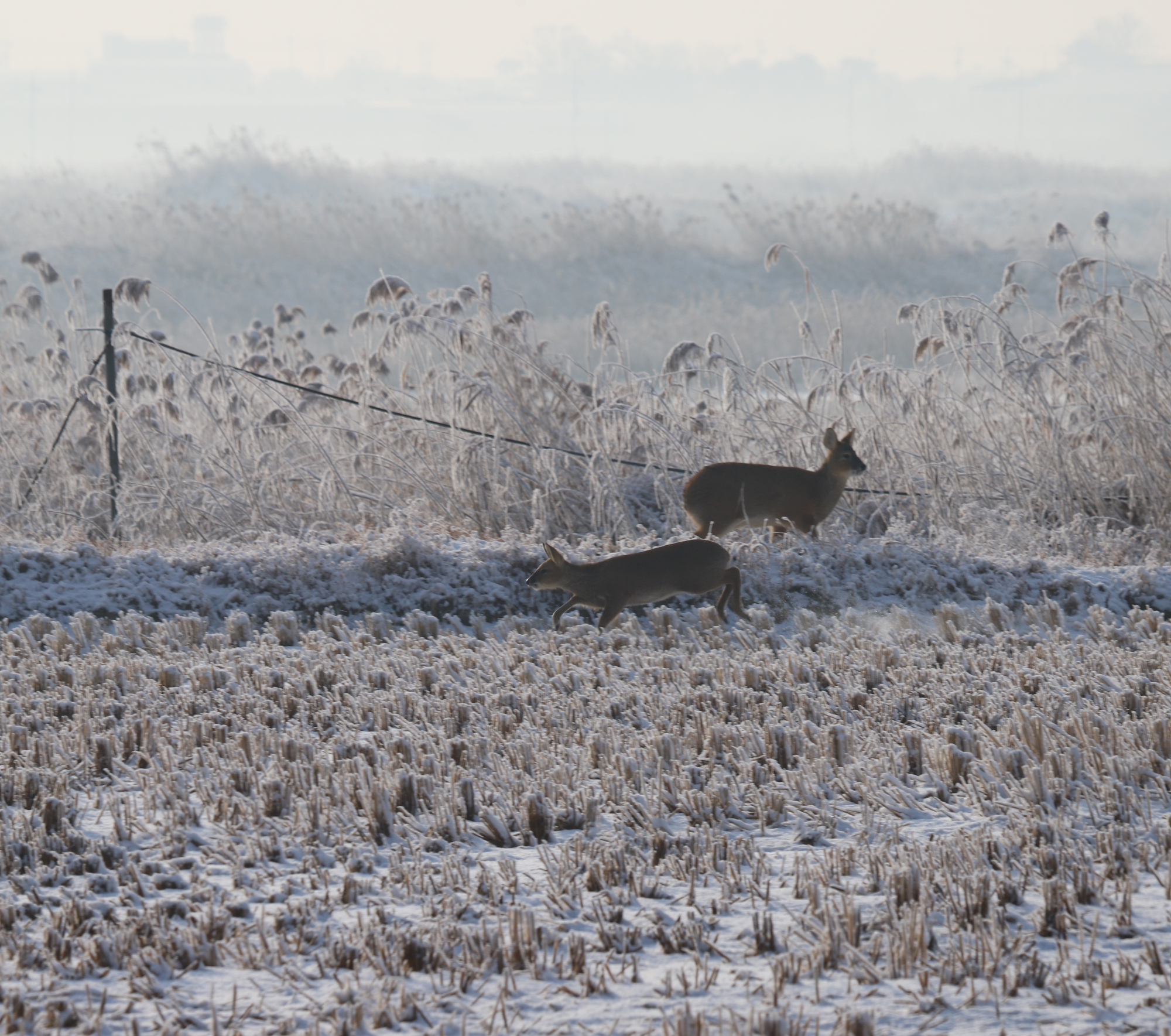Bird News from Nial Moores and Hanchul Jung (Gyeonggi KFEM)
Highlights of three more days of survey for the EAAFP-Hwaseong City Wetlands Project included 5-7 Relict Gull (between north Teibu and the Gojan Tidal flat), Saunders’s Gulls (including one banded bird in the FNS from..?), and in, or immediately adjacent to, the FNS stunning views of Oriental Stork (11 seen in total) and of two different Eurasian Bittern (out of up to five seen in one day), in addition to a minimum of five Upland Buzzard and 3+ Lesser White-fronted Geese still.









Because of a near month-long deep freeze almost all freshwater in the Hwaseong FNS was frozen and much of the higher tidal flat zone was also covered by ice (which was then used opportunistically by roosting flocks of Eurasian Curlew and smaller numbers of Grey Plover and Dunlin at high tide).



The conditions did make it easier to find mammals though. In addition to seeing suspected River Otter tracks, and 2-3 globally Vulnerable Korean Water Deer, we also enjoyed excellent views of an Amur Leopard Cat.


Importantly, largely because of the freeze, we counted only 8,598 waterbirds within our main Project Survey Area (which largely overlaps with the Hwaseong Wetlands FNS), with 5,500 of these Tundra Bean Goose, and an additional 8,434 waterbirds along almost 50km of Gyeonggi coast.
This January total compares with a minimum 51,946 waterbirds counted within the FNS alone in mid-December 2020 (and 81,783 waterbirds counted there in mid-November, including at least 40,500 Tundra Bean Goose).
Where do all the duck and geese go when things start to freeze up? Not locally based on our research…And it has longed seemed much more likely (and self-evident) that the majority must head southwest across the Yellow Sea into China. This is because we can have more than 300,000 Tundra Bean here in the ROK during southward migration (in October and November), but only 80,000-90,000 are suspected to winter here. A very recent paper, “Bean Goose flyways in East Asia” in Wildfowl (2020), states that c. 270,000 Tundra Bean now winter in China. This suggests that perhaps the vast majority of these China-wintering Tundra Beans first stage in Korea. However, the same paper does not discuss the difference in numbers in Korea between November and January, and instead recommends recognising three distinct management units, with (more or less) discrete populations wintering in China, Korea and Japan.
The best decision?


